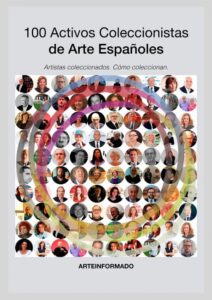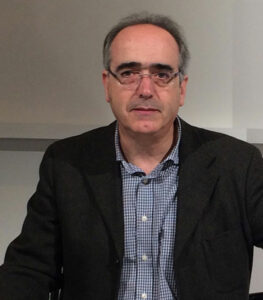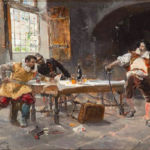31 Ene Interview with Carlos Guerrero, director of Arteinformado.
In our monthly podcast, Planeta Arte, we counted this January with the presence of Carlos Guerrero, director of Arteinformado. They have recently presented a powerful report on Spanish collectors, and we have not wanted to miss the moment to ask about this fact. We leave here the complete interview, so you do not miss detail.
- Portada del informe:
- Carlos Guerrero, director de ArteInformado
M: Today we are here with Carlos Guerrero, director of Arteinformado. Good morning Carlos, how are you?
C: Good morning, how are you?
M: We will speak a little today about the report of the Spanish collectors that you have made these last two years and that is having a lot of hype in the world of the art market. We would like to ask you, is it the first time that you make a report of these characteristics?
C: Yes, the Spanish collectors theme are the first time that we approach it. We did it two years ago with the Hispanic-American collectors, in an edition that was presented two years ago at ARCO. It is the first time that we make a review about Spanish collectors.
M: How was the reception of the report on Hispanic-American collectors?
C: Well, the truth is that it was very well received throughout Latin America and in Spain. He was referred to in different media and we know that it has been used by collectors, curators, museistic responsibles, in all that field. In the presentation were Gabriel Pérez-Barreiro (director and chief curator of the Cisneros Collection) and Ariel Aiskis (founder and CEO of the Institute for Studies on Latin American Art (ISLAA)) who presented Latin American art based on this report.
M: And, regarding how you have made the report of the Spanish collectors, what can you tell us about it? How was the process?
C: Our methodology is, apart from the information that we gather in the platform from multiple sources, from artist’s curriculum to information about fairs and collectors, etc.; it is added, pasted and polished, and in the last phase we try to have a meeting, an interview, with the collector to clarify the data we have and ask for his opinion about how the market is and how his process has been as a collector.
M: What conclusions could you draw from personal interviews with collectors?
C: The conclusions are suggested in the conclusions of the report, but there are no unique conclusions. The Spanish collector is very diverse, there are many types and although in this case we approach a type of collector that is still active, each of them has very different interests. Some openly support museums, others have their own museum space, or provide works according to their interests or the needs of those who ask for them. There is no exact profile of a Spanish collector, that is, it is very diverse.
M: And do you find any clear difference between the Spanish collector and foreign collectors? I imagine that as a result of the report on Latin American collectors you will have been able to draw some comparison.
C: Actually the biggest difference is in the size and investment capacity of the collector. The Latin American collector usually has a higher purchasing power than the Spanish, on average, not always like that, but on average it is. It also has, in addition, larger collections. On the other hand, we have noticed that many Latin American collectors reside outside their origin countries and feel a certain predilection to support, and their most visible face is this support to the artists of their countries, in a return to the origin. In contrast, the Spanish collector who for years, especially the last decades of the last century, was very focused on Spanish art. Now he is more focused on international art.
M: And in what you mention to me, of Spanish art and international art, in terms of Spanish collectors, what kind of art is bought most in terms of painting, sculpture, graphic work, …?
C: I think there is no difference. First, because the techniques are increasingly mixed. Artists are bought: artists that interest me or artists that do not interest me. The technique I believe is not something that any collector takes into account.
M: Is there an artist that stands out above other names?
C: No, no, no. In addition, the type of collector we have analyzed is a collector of contemporary art, so the possibilities of purchase that the current collector has is very varied. I would say that in recent years this spectrum of purchase possibilities has been opened much more than ten years ago.
M: Great. And finally, can you tell me how you foresee from Arteinformado after this report the future of the Spanish collector?
C: The Spanish collector will increasingly be oriented towards the international. On the other hand, as with all the world collecting, the trajectory of the artists and their own tastes will be closely monitored, but they look for the capacity of surprise that the artist can offer.
Más noticias de Arte
Especialista en pintura moderna, tasadora y perito. Graduada en Historia del Arte por la Universidad de Salamanca.









No Comments